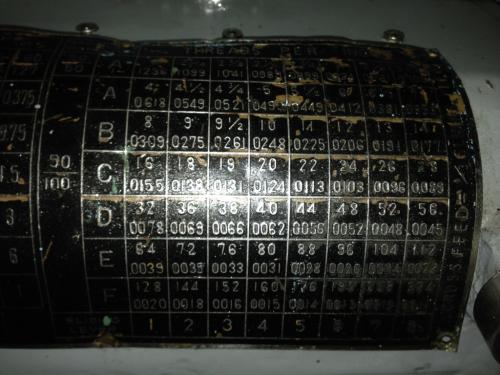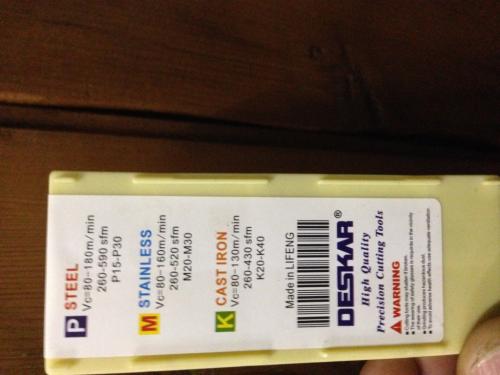05-20-2015, 04:54 AM
The thread cutting chart on my lathe has a set of numbers in each of the chart locations, below the TPI number. I have ignored these numbers in the past as I had no idea what they meant. It occurred to me the other night that they must relate to the travel of the saddle, ?in inches per revolution, when using the geared drive rather than the leadscrew- only thing that makes sense to me. Would that be correct?

If that is the case, how (if at all) does that relate to these numbers on a pack of carbide inserts?
These are parting inserts, the only ones I have in a pack (I have a bunch of other mystery inserts from a clearing sale)

I know what SFM is, I can deduce that M/min is the direct metric equivalent, I have absolutely no idea what the P15-P30, M20-M30 and K20-K30 refer to.
If that is the case, how (if at all) does that relate to these numbers on a pack of carbide inserts?
These are parting inserts, the only ones I have in a pack (I have a bunch of other mystery inserts from a clearing sale)
I know what SFM is, I can deduce that M/min is the direct metric equivalent, I have absolutely no idea what the P15-P30, M20-M30 and K20-K30 refer to.
Lathe (n); a machine tool used in the production of milling machine components.
Milling Machine (n); a machine tool used in the production of lathe components.
Milling Machine (n); a machine tool used in the production of lathe components.




